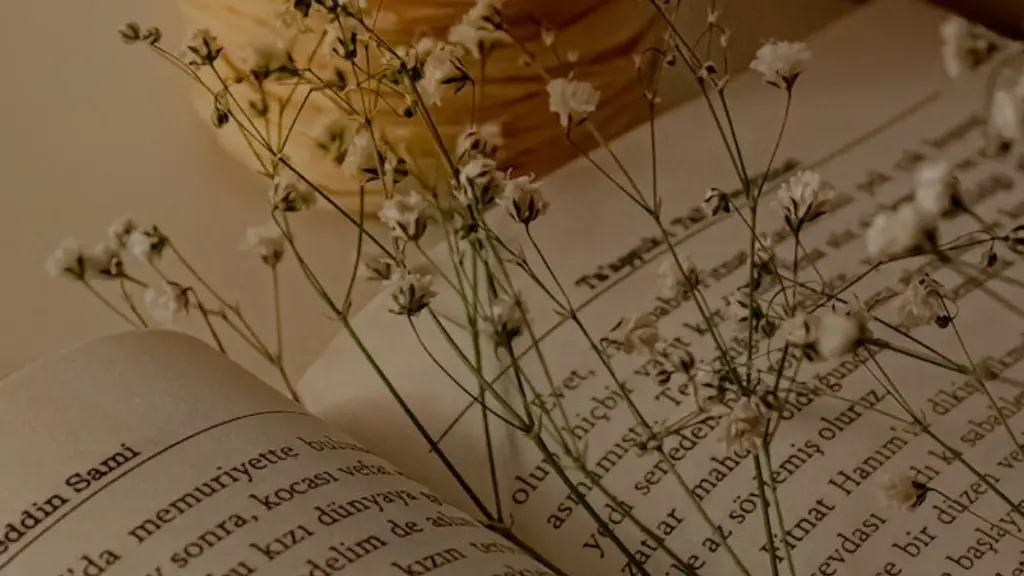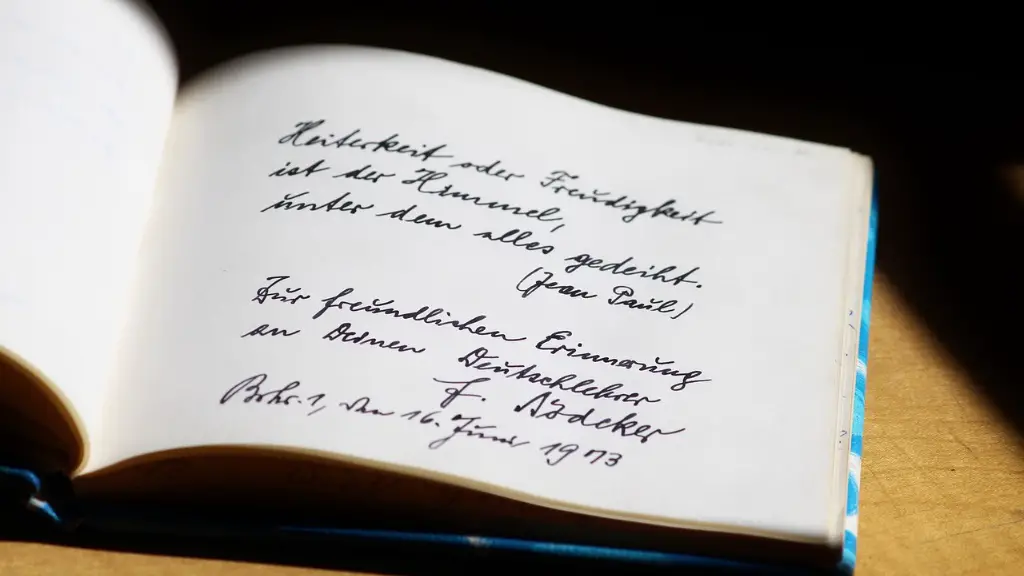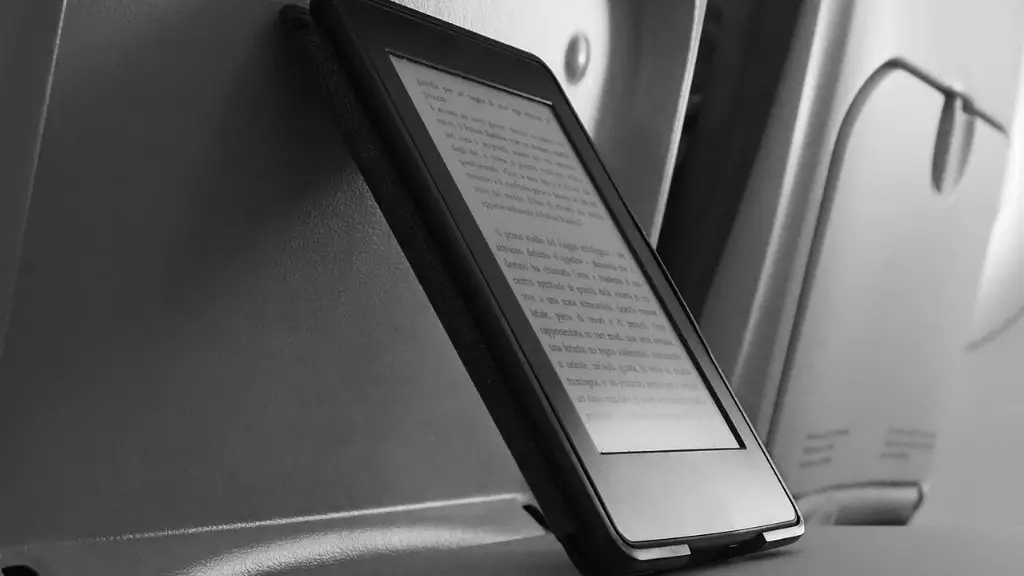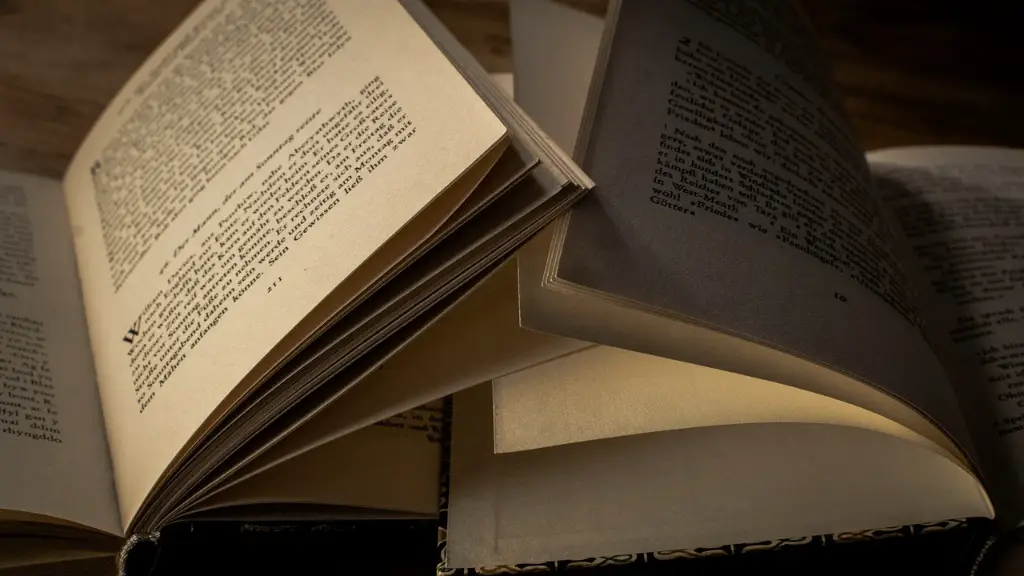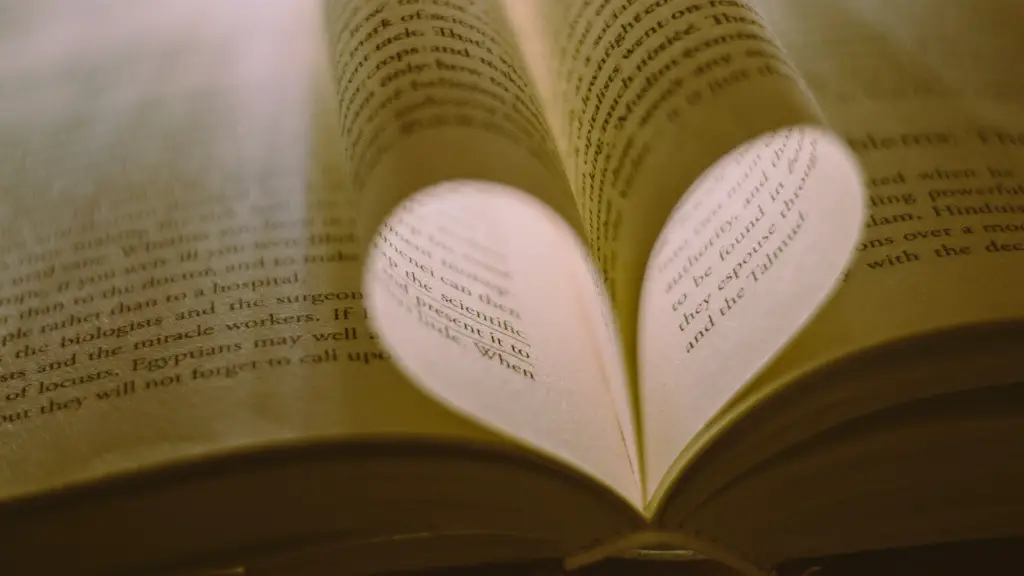How is Poetry Distinguished From Prose?
Poetry and prose are two different forms of writing that have many similarities, as well as differences. Each has its own purpose and characteristics, and can be used to create different effects. To understand the differences between poetry and prose, it is important to look at the qualities they each possess.
Poetry is a unique and highly structured form of writing that uses specific meter, rhyme, and other devices to convey an intended message. It is made up of lines, stanzas, and periodic breaks down. The structure of a poem is not linear, like a story, but more free-flowing. Additionally, poems often focus on one subject or emotion, and contain imagery and metaphor to draw a connection between what is expressed and how it is experienced in the real world.
Prose, on the other hand, is a more unrestricted form of writing that can be written in linear sequence or as a stream of consciousness. It does not contain specific meters, rhyme, nor does it have a predetermined structure. Prose often tells a story with character development, plot points, and resolution. It is generally written in plain language and avoids the use of obscure or overly literary language or devices.
Another defining characteristic of poetry is that it often appeals to readers’ senses and emotions, while prose works to explain and convey information. Poetry is full of sensory descriptions and figurative language, while prose is typically more focused on narrative and description. Poetry has the capacity to evoke powerful emotions and reactions in a reader, while prose attempts to explain logically and accurately through description.
Finally, one of the key distinctions between poetry and prose is the way in which they are used. Poetry is often used to express emotion, while prose can be used to explain concepts, report information, or tell a story. Poetry can be written to celebrate, mourn, lament, or to bring healing or hope. On the other hand, prose is used to inform and instruct, as well as to entertain.
What role does form play in distinguishing poetry from prose?
The form of a poem or prose can be an important factor in distinguishing one from the other. It is common for prose to appear in full sentences, paragraphs and chapters, with a clear transition linking the sections in between. Poems, on the other hand, may not follow a logical progression and rely on symbols, devices, and visual cues to create movement and establish atmosphere. The devices used in a poem are often unique to the form, such as rhyme, rhythm, meter, and line breaks. The form of a poem can be used to construct meaning and emphasize certain ideas.
The length of a poem or prose is also a distinguishing factor. Poems typically have fewer lines and stanzas than a piece of prose. Poetry is often concise, while prose can be lengthy and detailed. Additionally, poetry often has a unique pattern of rhyming, while prose can follow a more systematic flow.
In poetry, the lines, stanzas, and sentence fragments all serve a purpose, working to convey the poet’s meaning and emotion. By contrast, a piece of prose is often constructed in a more logical, linear manner. Prose focuses on the development of the story, while a poem may emphasize the words and their meanings.
The form of a poem or piece of prose can be an effective way of distinguishing between the two. The structure of a poem or piece of prose can be an important factor in determining its meaning.
The language used in a poem or piece of prose is an effective way of distinguishing between the two. Poetry often includes unique words, phrases, and devices that can evoke emotion or reveal a deeper meaning. Poets often use figurative language, such as metaphors and similes, to create imagery and to emphasize the poem’s message. Authors, however, may use plain language and less figurative devices.
The structure of a poem or piece of prose also plays an important role in distinguishing between the two. Poetry is often characterized by shorter lines and a more irregular structure than a piece of prose. This structure can be used to emphasize certain ideas or words, or to create an emotion or atmosphere. Prose, on the other hand, usually follows a linear or logical path. The sentences may be longer, as the content is more factual or descriptive.
Additionally, poetry often includes words and phrases that are not typically found in prose. Poetry can be allusive, containing references and symbols that may be unfamiliar to the reader. Poetry can also employ ambiguity, purposely leaving a certain phrase or idea open to interpretation. Authors, however, often write in an explicit manner, using straightforward and precise language.
The language and structure used in a poem or piece of prose are two of the most important factors in distinguishing between the two. Poets and authors use language in different ways to convey different messages.
While both poetry and prose can be powerful and compelling, the two differ in their source of authority. Poetry often draws its authority from its emphasis on emotion, imagery, and the precision of language. Prose, on the other hand, can be characterized by its focus on accuracy and factual information. Poetry is often subjective in nature, and relies on the reader to make connections between images and ideas. Prose, however, is often more objective, providing explicit instructions and details.
The accuracy of a poem or a piece of prose is another distinguisher between the two. Poetry tends to be less direct, as the writer leaves room for interpretation. As such, some words or ideas may remain open to individual understanding. Prose, on the other hand, is usually written to be precise and direct.
The accuracy of a piece of writing is important for determining its source of authority. Poetry often relies on emotion and the reader’s interpretation to create its source of authority, whereas prose focuses on accurate details and explicit instructions.
The devices used in a poem or piece of prose are an important factor in distinguishing between the two. Poets often use symbolism, metaphors, and other figurative language to convey an emotion or feeling. Prose writers, on the other hand, typically use plain language and descriptions to explain a concept or story.
The devices used in a poem are often unique to the form. These devices can include rhyme, rhythm, and alliteration, to create movement and emphasize certain ideas. This type of device helps convey the poem’s meaning, while also adding dimension and atmosphere. Prose, however, typically relies less on devices, as the writer’s goal is often to simply explain or report on facts.
The devices used in a poem or piece of prose are an effective way of differentiating the two. Poetic devices are often used to evoke emotion, or to emphasize certain ideas. Prose may not employ devices, instead relying on detailed descriptions and precise language.
How does the reader’s perspective influence the interpretation of a poem or prose?
The perspective of the reader is another distinguishing factor between poetry and prose. Because poetry often relies heavily on emotional and visual language, the reader’s interpretation can vary widely. Poetry can often be seen as more personal and subjective, as the reader can bring their own experience and understanding to the poem. Prose, however, is typically more objective and precise.
The reader’s knowledge and expertise can also be a factor in the interpretation of a poem or piece of prose. Poetry often uses language that is more obscure and literary, making it more difficult to understand. A reader with a more extensive literary background may be better suited to interpret a poem. Conversely, prose tends to be more accessible and straightforward, relying on details and descriptions to explain a concept or convey a story.
The reader’s perspective plays an important role in the interpretation of a poem or piece of prose. Depending on their level of knowledge, the reader’s understanding of the two is likely to vary.
